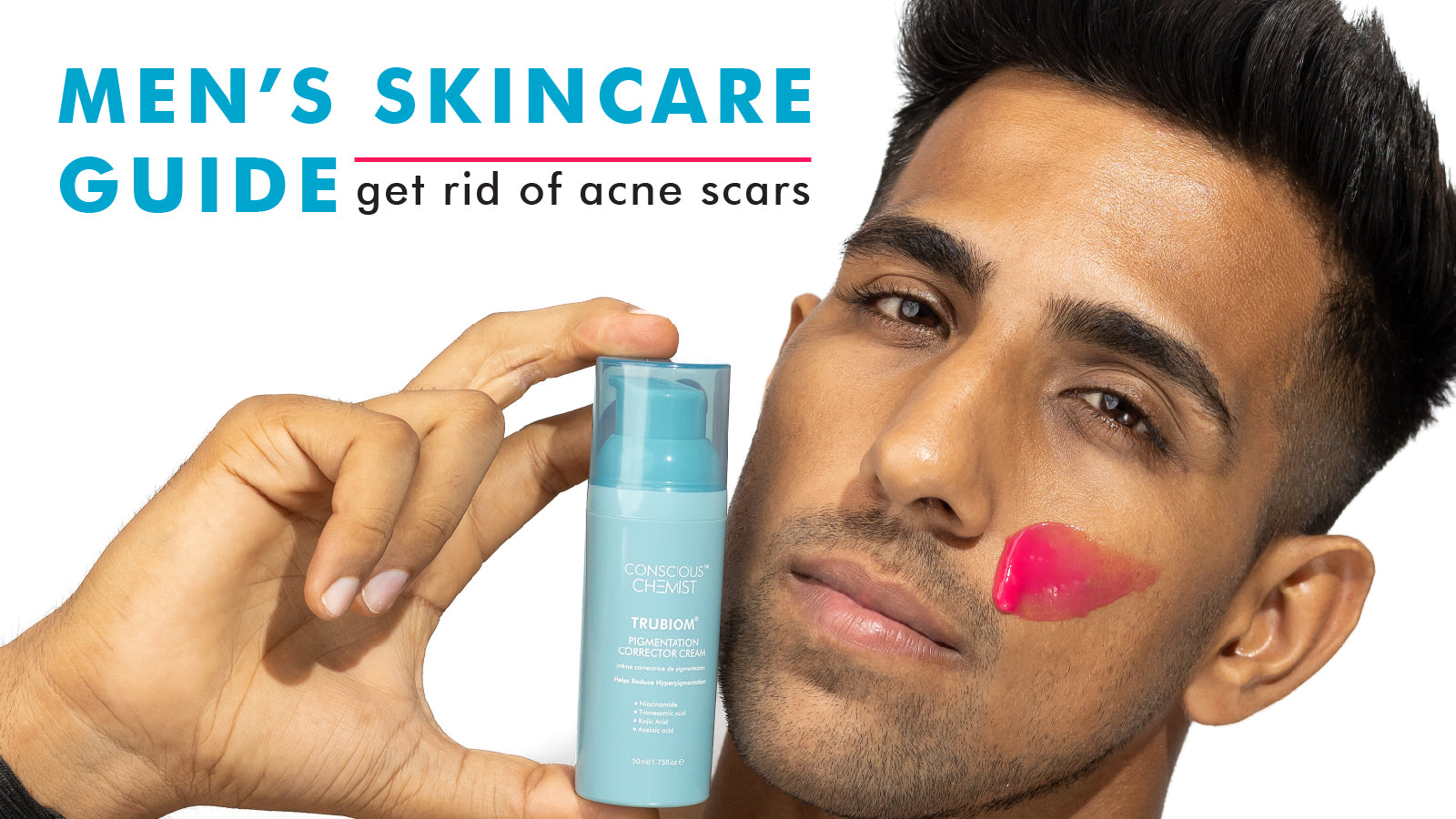The idea of skincare often has a feminine denotion to it regardless of truckloads of benefit it might offer. Having a full fledged, detailed and systematic skincare routine is a must have and of course manly enough as well. A bar of soap is majorly assumed as a complete skincare for men, however, it is not the best approach for your skin always. Your skin very much being the part of your body needs a dedicated routine and set of products that shall cater to the specific type of skin you have.
Having said that, research and studies show that a man’s skin tends to be oilier than that of a woman which can mean men are more prone to acne and related problems too. While acne is a skin concern suffered at large, it can be supremely annoying to completely solve it. There are so many stages a life of an acne goes through; the last ones being unpleasant of them all. Your skin’s surface can feel extremely smooth yet the post acne scars can make you feel worse.
It is okay to get frustrated every now and then and trying your level best to get rid of them. From the most expensive skincare routine to prescription medicines; it is a tiresome job to achieve a clear glowing skin. But nothing is impossible as they say! We need to understand the complete process of an acne scar before finalizing a solution for it.
What exactly is an acne scar?
Acne develops from within and it is rooted deep inside the skin tissues. Any redness, pricking, or inflammation caused by the acne damages the skin tissues leaving a scar behind. There are some acne scars that are tiny and shallow, not occupying much time to fade; while the others often spill around in the surrounding tissue causing large and deep marks that usually take a long time to go away.
Each scar can be formed as per an individual’s skin type resulting in different types of it. The time that they are going to last can also differ based on which type of acne scar your skin has developed. Here’s a rundown on most common types of acne scars:
-
Atrophic or Depressed Acne Scars: They sit below the acne surrounding skin and are formed when the skin is unable to produce enough collagen that is required by the wound in order to heal. They are broadly categorized into three types:
-
Boxcar: Commonly developed around lower cheeks or jaw; these scars are indents with sharper edges that go deep under the skin.
-
Ice Pick: One of the most challenging scars to overcome, you will find these developing around your forehead, upper cheeks or wherever your skin is thinner. It is wide on the top and narrows as it goes down. Thereby, being a scar deeply embedded in the skin.
-
Rolling: If your skin tends to feel wavy and uneven, then you probably have rolling scars. They have sloping edges and mostly developed around where the skin is thicker.
-
Hypertrophic or Keloid Scars: These types of scars rise off the skin and are formed when the skin is producing more than the collagen required by the wound to heal. They can feel tender, painful and itchy.
How do you get rid of them?
You’ve already come a long way if you’ve overcome acne! Now that you are left with blemishes; it is a journey that is a long one you must brace yourself for. However, there are tricks and tips you can incorporate to fasten this process.
VITAMIN C SUPREMACY
Vitamin C is a superhero whenever it comes to brightening the skin. It stimulates the collagen in your skin which in return brightens your skin. Moreover, it just doesn’t brighten the existing dark spots on your face but also prevent other ones from forming. There are multiple reasons to love Vitamin C anyway! It is rejuvenating and replenishing for skin in so many unsaid ways. It also effectively beats any active pigmentation on face, acting as the best dark spot corrector there is.
AHAs ALL THE WAY
The combination has been more popular than ever because why not? AHAs have taken the world of exfoliation by a spin. Talk about chemical exfoliation and AHAs are ruling the city. They dissolve the ‘chain’ that ties the dead skin cells together resulting in a clear, brighter skin. You’ll find AHAs in mandelic acid, glycolic or lactic acid. They deeply exfoliate and shed off the dead skin cell tissues, thereby, fading the discolouration. Using the acids regularly can further reduce any post-inflammatory marks or pigmentation.
RETINOL TO THE RESCUE
Retinol or the derivative of Vitamin A is a super-focused product in the anti-aging skincare market. Mostly because it is super efficient in increasing cell turnover. Retinol promotes collagen production to provide better elasticity to the skin. As collagen production is promoted and skin cell turnover is instigated, the dark spots eventually tend to lighten and fade eventually. While there exists a common myth around that retinol is meant for anti-aging but it is unknown the amount of advantages it can render to uneven skin tone.









How To Reduce Under-Eye Wrinkles In Your 20's?
Retinol Guide for your 20's, 30's and 40's